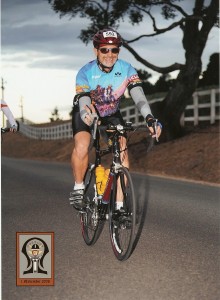When I am working with competitive athletes (amateur or professional) I will make a point of learning about their training regimens and performance through their coaches and then from the athletes.
I may even go and watch them train so I can see them in movement in their activities. I want specifics that includes whatever training formulas they use. I want to know when they will compete and when they will have down time. I also want to know what their goals are for a given training period and a specific competition. Remember… training, performance and competition aren’t the same objectives. The questions I ask my athlete clients is “what are your goals short and long term? How do you see Rolfing help you  prepare for your sport?”
prepare for your sport?”
When working with athletes the change that I look for is in performance. What is the athlete telling me about the difference in his/her game, form, and abilities. What do I see different in alignment, movement and awareness. What do the coaches say as being different about the athlete on the playing field — physical, emotional, cognitive.
In my opinion, athletes are better served if you help them find their “line” in their sport. In the language of athletes, lasting changes translate into improved performance and the awareness that rises from knowing the body is functioning more efficiently.
I also find that elite athletes bring a kinesthetic awareness to the Rolfing studio that the average client may not. But what is important here is finding the common language between Rolfer and athlete. That the language we use as Rolfers and how we apply concepts and models to bodies standing still or walking in our studio’s, may not play out the same for a body in dynamic movement. What may work better is language that helps both Rolfer and athlete understand the body in performance. Using models that are fluid can serve to enhance our vision and interventions in helping the athletes performance.
When working with athletes, I find that Rolfing based on principles is more effective than working by formula. For me it is more efficient and for the athlete it is to the point and more effective in enhancing performance. I also find it is less disruptive to the athletes training schedule and easier to schedule around competitions.
Bob Alonzi
Certified Advanced Rolfer

Recent Comments